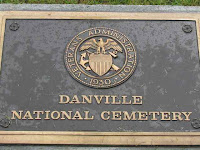 The Ovarian Cancer National Alliance, reports that each year in the United States, over 22,440 women are diagnosed
with ovarian cancer. That means 1 in 75 women will develop ovarian cancer in her lifetime. More than 14,000 will die from it!
The Ovarian Cancer National Alliance, reports that each year in the United States, over 22,440 women are diagnosed
with ovarian cancer. That means 1 in 75 women will develop ovarian cancer in her lifetime. More than 14,000 will die from it!
I began researching this disease after
finding the grave of Jane Todd Crawford in Sullivan County, Indiana several
years ago. Jane was the first person to survive abdominal surgery – for a 22-pound
ovarian tumor.
 |
| Jane Todd Crawford |
It was December 1809 when Jane
Todd Crawford became concerned about a pregnancy that was long overdue. At the
age of 46, and as a mother of four, she knew something was wrong and that she
needed medical attention.
 |
| Ephraim McDowell |
Jane wrote to Dr. Ephraim
McDowell in Danville, Kentucky, explaining her condition. McDowell traveled to Green County, Kentucky and
diagnosed a 22-pound ovarian tumor. He was interested in performing an
experimental abdominal surgery that might save her life, but he warned her that
so far the surgery had never been performed successfully. Knowing that her condition was fatal,
Crawford agreed to allow Dr. McDowell to operate on her.
 |
| Dr McDowell's Surgery Tools |
It was a harsh December day when
she set out on horseback from south of Greensburg to Danville, Kentucky, a journey of 60 miles. McDowell had refused to do the surgery anywhere but at his home where he
had the necessary assistance and equipment available.
The operation took place on
Christmas Day in McDowell’s home. (McDowell hoped the church music and bells would diminish the sounds of Jane's agony.) Jane was strapped down to a table and given an oral dose of opium before being cut open. (Anesthesia did not
exist yet.) Jane recited the
Psalms while the operation took place. During the 25 minute procedure, McDowell removed a twenty-two pound tumor in two sections. This was
the first successful abdominal surgery, and the first successful removal of an ovarian tumor, in the world!
Crawford’s recovery was
uneventful. She returned home at the end of January 1810. A few months later, the Crawford’s’ sold their land in
Kentucky and moved to Indiana.
 McDowell became famous as the
pioneer of abdominal surgical techniques. He performed the same operation on two
more women within the next few years and
published his report “Three Cases of Extirpation of Diseased Ovaria” in
1817. He continued practicing medicine
until his death, ironically from an apparent appendicitis, on June 25, 1830. His home in Danville, where the operation took place, is now a museum and
National Historic Landmark.
McDowell became famous as the
pioneer of abdominal surgical techniques. He performed the same operation on two
more women within the next few years and
published his report “Three Cases of Extirpation of Diseased Ovaria” in
1817. He continued practicing medicine
until his death, ironically from an apparent appendicitis, on June 25, 1830. His home in Danville, where the operation took place, is now a museum and
National Historic Landmark.  |
| Jane's Grave |
Jane Todd Crawford died in 1842, at
the age of 78, at her son’s home in Graysville, Indiana. She is buried in the
Johnson Cemetery, near Graysville, Indiana in Sullivan County. In 1871, the Women’s Auxiliary to the
Southern Medical Association dedicated a stone for her grave. In 1940, the American Hospital Association
placed a granite monument near her grave.
 Not only did Jane Todd Crawford
make history as the first woman to survive ovarian surgery, she gave thousands
of women hope concerning a disease that is slow, cruel, and still difficult to
survive.
Not only did Jane Todd Crawford
make history as the first woman to survive ovarian surgery, she gave thousands
of women hope concerning a disease that is slow, cruel, and still difficult to
survive.
I am currently working on a full-length play
about Jane’s life. Keep apprised of how the work is going on Facebook at A Grave Interest’s page.
~ Joy
My first book, The Family Tree Cemetery Field Guide, will be out in bookstores
nationwide the end of September. To order an advanced copy, visit Family Tree.











































